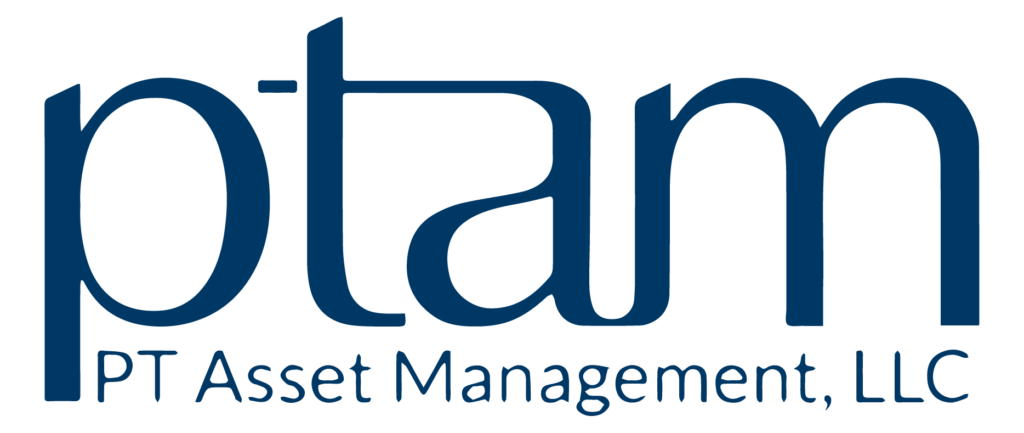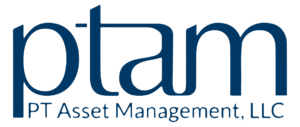Muni Market Insights
Medicaid Cuts: Measuring Potential Downstream Credit Impact on State and Hospital Sectors
June, 2025
Executive Summary
- The recent passage of the House Ways and Means Committee tax reconciliation bill has preserved the tax exemption for municipal bonds and provided some certainty for government issuers planning long-term capital projects.
- We examine the potential risks stemming from the proposed federal cuts to Medicaid funding and its potential impact for state and healthcare credit, particularly in states that expanded Medicaid under the Affordable Care Act (ACA).
Medicaid and the Trump Administration Tax Bill
While several unknowns still exist for municipal issuers going into the second half of 2025, the recent passage of the House Ways and Means Committee tax reconciliation bill preserving the tax exemption for municipal bonds (Munis) has provided one element of certainty. The passage allows government issuers to potentially better plan capital funding needs, especially for longer term capital projects with less concern over the prospect for higher costs of capital.
Despite this, some degree of uncertainty remains surrounding the final form of the tax bill that could more directly impact state and healthcare credit, specifically as it relates to the contemplated cuts to federal dollars directed to states to help pay for Medicaid Expansion opted into under the ACA. Federal Medicaid funding, a sizeable budget line item, is under consideration for cuts to help pay for the extension of The Tax Cuts and Jobs Act (TCJA) of 2017 enacted under the first Trump Administration and is set to expire at the end of 2025.
The size of the potential federal cuts remains unknown as the tax bill is actively being marked-up by the Senate, and the mechanism through which federal savings may be achieved, whether through eligibility rules modification or reduction in Federal Medical Assistance Percentage (FMAP) is still unclear. Ultimately, any reduction in federal funds shifts more of the cost burden to state governments and municipal obligors who are downstream beneficiaries of state funding.
Credit Impact of Medicaid Cuts on Municipals
Potential federal cuts to Medicaid may have downstream credit implications more directly on state finances and hospital operations, but that would depend on the final form of the tax bill. A state’s financial resilience and short-term budgetary flexibility will be a factor in how well a state can manage this disruption. A hospital’s fundamentals—including its structure (single site or integrated system), geographic diversity, specialty offerings, payor mix (reliance on Medicaid reimbursements), and financial wherewithal (cash position and healthy operating margin)—are factors that may determine a credit’s ability to cushion policy change.
States State credit generally is healthy despite the challenges of slowing overall economic conditions, inter-state migration, aging population, inflation, and tariffs. The 50-state median rainy day fund balance reached 49.1 days or 13.5% of spending in FY2024, a rising trend that started in 2010 after the Great Recession, from a low of 6.0 days or 1.6% of spending. Total fund balances, however, have dropped to a 50-state median of 103.7 days or 28.4% of spending in FY2024, from a peak of 144.2 days or 39.5% of spending in FY2022. These drawdowns of ending balances may be attributable to one or more factors, including growing expenditures, slowing revenue, debt repayment or non-recuring funding. A lower ending balance, regardless of its use, means reduced fiscal flexibility.
Hospitals Healthcare credit has emerged from the official end of the Covid pandemic, with some degree of stabilization, while still uneven across the sector. From mandated shutdowns (lower admissions) to higher inflation, borrowers’ ability to cut costs through downsizing contract labor, renegotiating vendor contracts, and restructuring debt, have contributed to a return to positive margins. As of April 2025, cumulative operating margin reached 3.3% in contrast to 2022, which according to Kaufman Hall was the worst financial year since the start of the pandemic, with half of hospitals ending the year with negative margins (2022 ended with a median operating margin of 0.2%).
To illustrate the impact of potential federal cuts to Medicaid, we examined the top 15 states in debt outstanding (which account for approximately 79.0% of total state debt outstanding) and assumed that both states with and without trigger laws would temporarily fully fund their respective federal shares of Medicaid Expansion costs for two years as a stopgap measure, while state legislatures work towards longer-term, sustainable solutions. Medicaid expansion is expensive relative to state budgets, even with the existing 90.0% federal match rate in place. Simply funding the full cost of the federal share on a multi-year go-forward basis may cause fiscal strain. There could be instances where certain states, with both the financial flexibility and legislative support, fund the expansion for a longer period.
It is also assumed that states will not pursue quick short-term savings by cutting optional benefits, raising revenue (raise existing taxes or creation of new taxes), or restrict eligibility (coverage for certain populations).
State rainy day funds are assumed to not be available for use in this case. The primary purpose of a rainy day fund is to address an unanticipated annual deficit to balance a budget during an economic downturn where naturally revenues drop, and expenditures rise. It is effectively a one-time source of funds that is replenished over time. Such downturns are perceived as temporary and typically last a business cycle. In contrast, a potential cut in federal funding is viewed as a more permanent and structural change to the budget. Additionally, the conditions for withdrawals and repayment vary across state constitutions.

Key Findings
- Emergency Liquidity Rainy day funds designed to resolve short-term, one-time unanticipated budget deficits, should they be allowed by states, would only fund Medicaid Expansion costs as a “one-time measure” for less than one year at the median.
- Debt Burden Leverage as measured by state debt per capita would grow 84.6% at the median if funded with debt for a two-year period. Higher leverage would pressure a state’s tax base and revenue sources leaving less room for debt capacity intended for other priorities.
- Taxpayer Burden An alternative approach of looking at the additional cost is on a per capita basis as a percent of personal income. The median burden to fund the two-year expansion cost would amount to 1.7% of per capita personal income, which could be a challenging proposition for lower income populations.
- Hospital Exposure Hospitals with the highest median Medicaid payor mix are in Kentucky, Louisiana, New York, California, and Hawaii, all of which are Medicaid expansion states. Hospital facilities located in states with a higher share of vulnerable populations may experience operating margin erosion, as millions could be at risk of losing access to care, which in turn would increase uncompensated care costs (including safety net and rural hospitals). Hospitals with relatively weaker fundamentals and a higher proportion of Medicaid payor mix, located in states with less budgetary flexibility and lower financial resilience, may be impacted most.


1 Medicaid Expansion Spending www.kff.org (accessed (06/11/2025)
2 Federal spending for the state expansion group totaled $158.3bn in FY2023. State and Federal spending (traditional Medicaid and expansion program) totaled $863.8 bn in FY2023.
3 Pew Charitable Trust Fiscal 50 www.pew.org 2 Pew Charitable Trust Fiscal 50 www.pew.org (accessed 06/11/2025) (accessed 06/11/2025)
4 Kaufman Hall National Hospital Flash Report – April 2025 (accessed 06/11/2025) www.kaufmanhall.com 5 Kaufman Hall National Hospital Flash Report – January 2023 (accessed 06/11/2025) www.kaufmanhall.com
Glossary
Medicaid Joint federal and state program that provides health coverage to low-income individuals and families, Payor Mix Refers to the breakdown of a hospital’s revenue sources which include Medicare/ Medicaid, commercial insurance and self-pay. Total Fund Balance Net resources available in a state’s governmental funds at the end of a fiscal year (includes general fund and rainy-day fund). Trigger Law Laws in place that would automatically end Medicaid expansion or require changes if the federal match rate were to drop. Not all trigger laws would immediately end the Medicaid expansion. Fixed cost burden Consists of annual recurring fixed costs needed to meet long-term obligations (debt service payments, pension contributions, and retiree health care contributions [OPEB]). Net direct debt means total direct debt minus self-supporting debt. Self-supporting debt is debt with a specific revenue source pledged for its repayment. Total Fund Balance Net resources available in a state’s governmental funds at the end of a fiscal year (includes general fund and rainy-day fund). Total government funds revenue (TGFR) Total governmental revenue is used for calculation of certain metrics as it gives a more comprehensive view of states financial sources and expenditures.
Risks and Other Important Considerations
Not an Offer, Recommendation or Professional Advice: This document does not constitute advice or a recommendation or offer to sell or a solicitation to deal in any security or financial product. It is provided for information purposes only and on the understanding that the recipient has sufficient knowledge and experience to be able to understand and make their own evaluation of the proposals and services described herein, any risks associated therewith and any related legal, tax, accounting or other material considerations. To the extent that the reader has any questions regarding the applicability of any specific issue discussed above to their specific portfolio or situation, prospective investors are encouraged to contact PT Asset Management (PTAM) or consult with the professional advisor of their choosing.
Forward-Looking Statements: Certain information contained herein constitutes “forward-looking statements,” which can be identified by the use of forward-looking terminology such as “may,” “will,” “should,” “expect,” “anticipate,” “project,” “estimate,” “intend,” “continue,” or “believe,” or the negatives thereof or other variations thereon or comparable terminology. Due to various risks and uncertainties, actual events, results or actual performance may differ materially from those reflected or contemplated in such forward-looking statements. Nothing contained herein may be relied upon as a guarantee, promise, assurance or a representation as to the future.
Investing involves risks; principal loss is possible. There is no guarantee that the strategies and services will be successful or outperform other strategies and services. Certain assumptions may have been made in connection with the analysis presented herein, and changes to the assumptions may have a material impact on the analysis or results. The information contained herein has been obtained from sources considered to be reliable, and is subject to change without notice. PT Asset Management, LLC does not guarantee its accuracy, adequacy or completeness and is not responsible for any errors or omissions for the results obtained from the use of such information.
CFA® and Chartered Financial Analyst® are registered trademarks owned by CFA Institute.
PT Asset Management (PTAM) is the advisor to the Performance Trust Funds. Distributed by ALPS Distributors, Inc. © 2025 PT Asset Management, LLC. All Rights Reserved. Investment and Insurance Products: Are not FDIC or any other Government Agency Insured •Are not Bank Guaranteed •May Lose Value.


